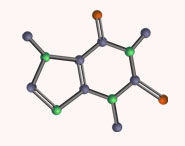


 علم الكيمياء
علم الكيمياء 
 الكيمياء التحليلية
الكيمياء التحليلية 
 الكيمياء الحياتية
الكيمياء الحياتية 
 الكيمياء العضوية
الكيمياء العضوية 
 الكيمياء الفيزيائية
الكيمياء الفيزيائية
 الكيمياء اللاعضوية
الكيمياء اللاعضوية 
 مواضيع اخرى في الكيمياء
مواضيع اخرى في الكيمياء
 الكيمياء الصناعية
الكيمياء الصناعية |
Read More
Date: 17-4-2019
Date: 21-5-2019
Date: 5-4-2019
|
Temperature and Heat
When you measure, say, the air temperature in your backyard, you’re really measuring the average kinetic energy (the energy of motion) of the gas particles in your backyard. The faster those particles are moving, the higher the temperature is.
The temperature reading from your thermometer is related to the average kinetic energy of the particles. Not all the particles are moving at the same speed. Some are going very fast, and some are going relatively slow, but most are moving at a speed between the two extremes.
If you’re in the U.S., you probably use the Fahrenheit scale to measure temperatures, but most scientists use either the Celsius (°C) or Kelvin (K) temperature scale. (Remember:
There’s no degree symbol associated with K.) Water boils at 100°C (373 K) and freezes at 0°C (273 K).
Here’s how to do some temperature conversions:
✓ Fahrenheit to Celsius: °C = 5⁄9(°F – 32)
✓ Celsius to Fahrenheit: °F = 9⁄5(°C) + 32
✓ Celsius to Kelvin: K = °C + 273
Heat is not the same as temperature. When you measure the temperature of something, you’re measuring the average kinetic energy of the individual particles. Heat, on the other hand, is the amount of energy that goes from one substance to another.
The unit of heat in the SI system is the joule (J). Most people still use the metric unit of heat, the calorie (cal). Here’s the relationship between the two: 1 calorie = 4.184 joules The calorie is a fairly small amount of heat: the amount it takes to raise the temperature of 1 gram of water 1°C. I often use the kilocalorie (kcal), which is 1,000 calories, as a convenient unitof heat. If you burn a large kitchen match completely, it produces
about 1 kcal.



|
|
|
|
للتخلص من الإمساك.. فاكهة واحدة لها مفعول سحري
|
|
|
|
|
|
|
العلماء ينجحون لأول مرة في إنشاء حبل شوكي بشري وظيفي في المختبر
|
|
|
|
|
|
|
قسم العلاقات العامّة ينظّم برنامجاً ثقافياً لوفد من أكاديمية العميد لرعاية المواهب
|
|
|